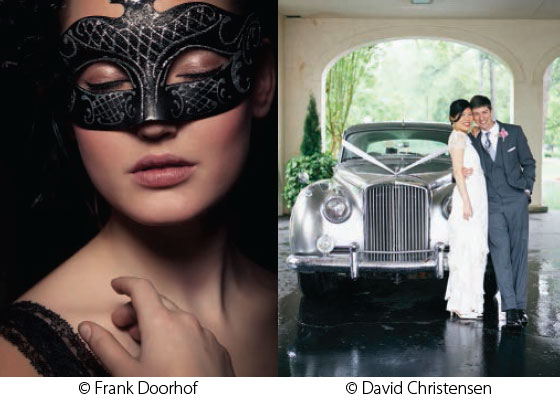Originally published in Rangefinder Magazine. © Rangerfinder Magazine 2013
Fashion and celebrity photographer Frank Doorhof, based outside Amsterdam in Emmeloord, shoots with the Leaf Credo 60, but was hard-pressed to choose a favorite portrait lens for his medium-format rig. “If I had to choose, I think it would be the Mamiya 105-210mm (which, unfortunately, is discontinued*) or the Mamiya 150mm lens.” While both are “amazing” lenses, Doorhof tends to shoot with the 150mm when he has a fixed setup and wants maximum sharpness. When he wants to experiment with different crops and compositions, he’ll use the 105-210mm. The Mamiya 120mm macro is also among his favorites for portraits, he says, citing, “it’s one of the sharpest lenses I own on the 645 system.”

Frank Doorhof shoots with the Leaf Credo 60, sees lenses “as the brushes of the painter” and believes there is no one lens solution for portrait photography. But his first choice is the now discontinued Mamiya 105-210mm lens, which he used at 210mm to photograph the masked woman shown above.
The Mamiya Sekor and Schneider Kreuznach 80mm leaf shutter lens from Phase One are editorial and commercial photographer David Christensen’s favorite portrait lenses. The 80mm is his “go-to” lens because of the perspective and, as shown in this wedding portrait, its almost 3D effect.
Doorhof says that although “a lot of photographers forget about the RZ67 Pro II and label it ‘old’, for studio work it’s one of the best cameras available.” That adds a couple of other lenses to his list of favorites—the 110mm f/2.8 or the 180mm long barrel lens from Mamiya.
Editorial and commercial photographer David Christensen, who shoots with a Phase One IQ140, likes to keep things simple and is more definitive when it comes to his favorite portrait lens. He shoots with the Mamiya Sekor 80mm, f/2.8 D (for handheld shots) and the Schneider Kreuznach 80mm LS (leaf shutter) f/2.8 from Phase One. The 80mm is his go-to lens. “I’ve used the 110mm but it’s too long for me.” Rather, he says, “I like the 80mm just for the perspective” and the almost three-dimensional look it delivers—something that he can’t achieve with, for example, a 35mm lens.

[prima_products_with_skus title=”Mamiya Lenses On Sale” skus=”210-610,312430,210-608,210-607″ numbers=”4″ columns=”4″ ]Capture Integration has the
last remaining new inventory on these select lenses. Warranties included. Call or
order online today.
Christensen also likes the compression and shallow depth-of-field with the 80mm lens, as well as “the field of view I get in the background. I like to see the environment in my shots,” which he can tighten up if necessary by framing his shot (zooming) with his feet instead of the lens. He prefers manual focus and finds that with the 80mm lenses, he can rest the camera in the palm of his hand and turn it with one finger to focus. This allows him to easily nail the focus more quickly and accurately on moving subjects than with the AF engaged, particularly with shallow depth-of-field. It took practice, but Christensen says, “I can rack my focus from foreground to background as fast as the camera can capture shots at one frame per second.” It sounds like the time he spent practicing manual focus while sitting on his couch serves him well in real life.